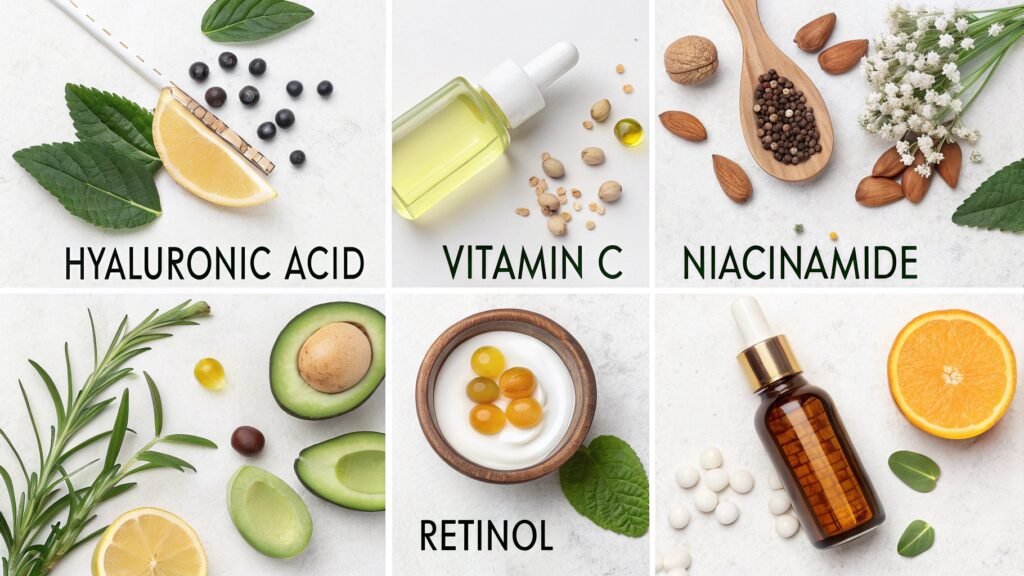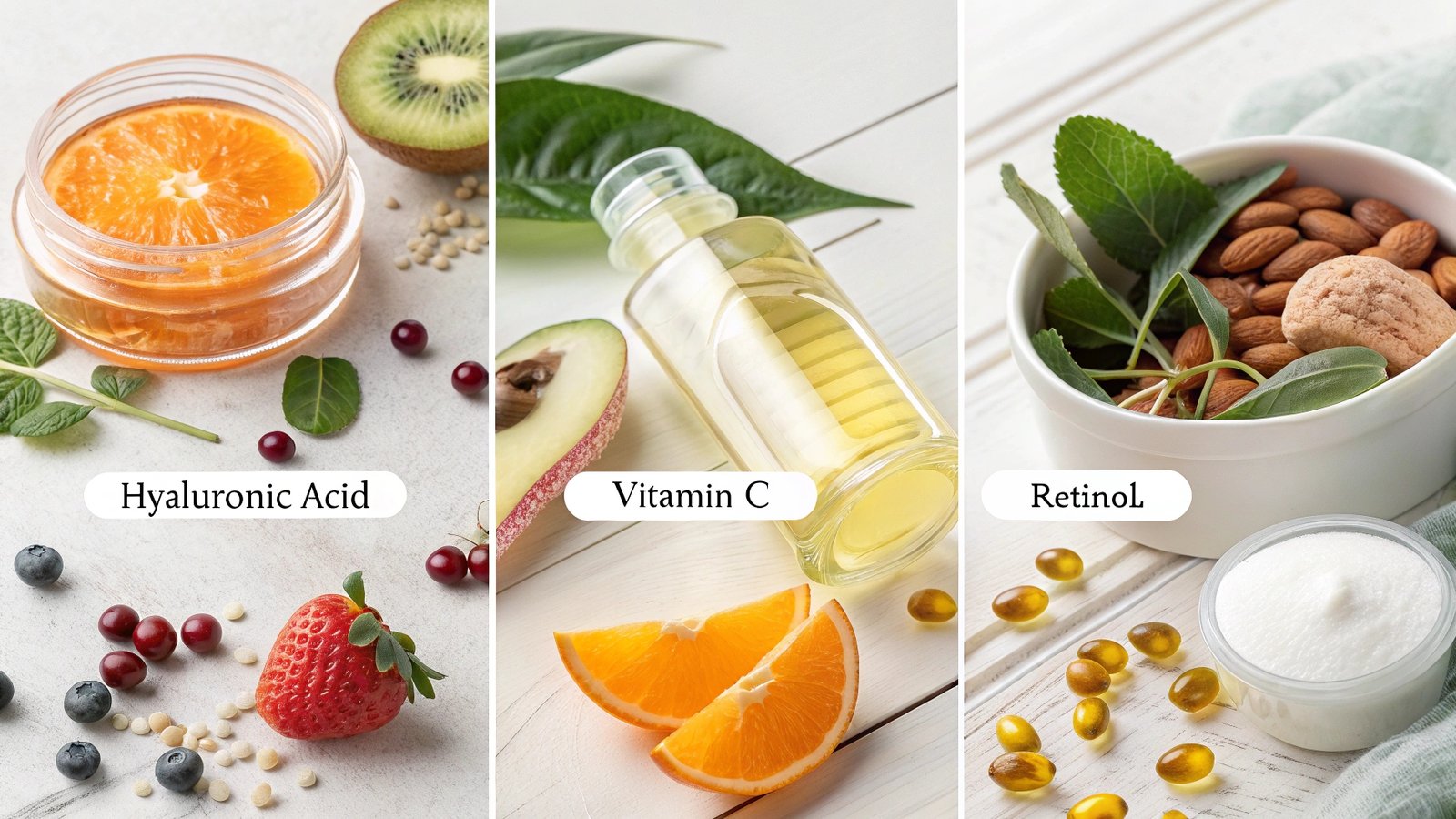What are actives in skin care? Learn how active ingredients like retinol, vitamin C, and salicylic acid target acne, aging, and pigmentation.
This beginner-friendly guide explains the most effective actives, how to use them safely, what not to mix, and how to build a results-driven skincare routine.
If you’ve spent any time exploring the world of skincare, you’ve likely come across terms like retinol, vitamin C, or niacinamide—often described as “actives.” But what are actives in skin care, and why do they matter?
Understanding active ingredients is essential if you want to target specific skin concerns, like acne, wrinkles, dark spots, or dullness. But with so much jargon and misinformation, it’s easy to get overwhelmed.
In this beginner-friendly guide, we’ll break down:
- What actives actually are
- Why they’re used in skin care
- The most common types of actives
- How to use them safely and effectively
- Tips for combining actives without damaging your skin
Let’s unlock the science behind your serums and creams!
In simple terms, actives are the ingredients in skincare products that do the “work.” These are the clinically proven components that target and treat specific skin concerns such as acne, hyperpigmentation, aging, or dryness.
Unlike basic ingredients that hydrate or cleanse, actives bring visible results when used correctly and consistently.

| Actives | Inactives |
|---|---|
| Target specific concerns (e.g. acne, wrinkles) | Support product texture or delivery |
| Require precise concentration | May include water, oils, or emulsifiers |
| Can be irritating if misused | Usually non-reactive |
Example: In a vitamin C serum, ascorbic acid is the active ingredient. The rest (water, glycerin, preservatives) are inactives.
Actives are the powerhouses of your skincare routine. Whether you’re looking to fight acne, reduce dark spots, or slow down aging, actives are the ingredients that deliver visible, science-backed results.
- Clear acne and prevent breakouts
- Brighten dull, uneven skin tone
- Reduce fine lines and wrinkles
- Minimize pores
- Boost collagen production
- Hydrate and strengthen the skin barrier
Skincare without actives is like a gym workout without resistance it cleans and maintains but doesn’t transform.

Here are some of the most effective and popular active ingredients used in modern skincare:
- Best For: Acne, aging, fine lines, large pores
- What It Does: Increases cell turnover, boosts collagen, unclogs pores
- Caution: Start slowly; can cause irritation
- Best For: Dullness, dark spots, sun damage
- What It Does: Brightens skin, boosts collagen, fights free radicals
- Tip: Use in the morning with sunscreen
- Best For: Redness, oil control, uneven tone
- What It Does: Calms inflammation, strengthens skin barrier, reduces pore size
- Best For: Oily skin, blackheads, acne
- What It Does: Exfoliates inside pores, dissolves oil buildup
- Best For: Texture, pigmentation, fine lines
- What It Does: Exfoliates top layers of skin for smoother texture and glow
- Best For: Dehydrated, dry skin
- What It Does: Attracts moisture, plumps skin
- Best For: Rosacea, redness, hyperpigmentation
- What It Does: Evens tone, reduces bacteria, soothes inflammation
- Best For: Anti-aging, firmness
- What It Does: Signals skin to produce collagen and elastin
Each active works differently and suits different skin types. Choose based on your specific concerns and tolerance level.
Using actives incorrectly can cause:
- Redness
- Flakiness
- Burning
- Sensitivity
Here’s how to use them safely and effectively:
- Patch test first (apply to a small area for 24–48 hours).
- Start low and slow (e.g., use retinol 1–2 times per week).
- Apply actives on clean, dry skin, followed by moisturizer.
- Use sunscreen daily — many actives increase sun sensitivity.
- Don’t mix incompatible actives (e.g., avoid using strong acids + retinol together).
- Read the product concentration—higher isn’t always better.
For beginners, start with niacinamide or hyaluronic acid, then introduce more potent actives like retinol or AHAs.
Mixing actives can be powerful — or dangerous.
- Vitamin C + Vitamin E + Ferulic Acid – Powerful antioxidant protection
- Niacinamide + Hyaluronic Acid – Hydrating and calming
- Salicylic Acid (BHA) + Niacinamide – Great for acne-prone skin
| Do Not Mix | Why |
|---|---|
| Retinol + AHA/BHA | Over-exfoliation, irritation |
| Vitamin C + Niacinamide* | May cancel each other out (debatable) |
| Retinol + Benzoyl Peroxide | Increased dryness, decreased effectiveness |
Tip: If you want to use incompatible actives, use them at different times (e.g., Vitamin C in the morning, retinol at night).
| Time | Step | Example Active |
|---|---|---|
| Morning | Cleanser | — |
| Antioxidant serum | Vitamin C | |
| Moisturizer | — | |
| Sunscreen | SPF 30+ | |
| Night | Cleanser | — |
| Treatment | Retinol (2x/week), Niacinamide | |
| Moisturizer | — |
Always adjust based on your skin’s tolerance. Introduce one new active at a time.
Actives are ingredients that directly target skin concerns like acne, aging, or pigmentation, backed by scientific research.
Yes, but with caution. Stick to compatible combinations, and introduce new actives slowly to prevent irritation.
Yes, but you must choose actives suited to your skin type. For example, oily skin may benefit from BHA, while dry skin prefers hyaluronic acid.
Not all. Avoid retinoids and consult your dermatologist. Ingredients like niacinamide and azelaic acid are generally safe.
Most actives show results in 4 to 12 weeks with consistent use. Some (like exfoliants) can show changes within days.
Absolutely! If you’re looking for real results, incorporating actives in skincare is key to achieving smoother, clearer, more youthful-looking skin.
Just remember:
- Start slow
- Focus on your skin’s specific needs
- Prioritize sun protection
- Be consistent
Actives are where beauty meets science, and when used properly, they can completely transform your skin.
Which Country Has the Best Skin Care? A Global Guide to Beauty Excellence
Can You Use Skin Care Products Under or Over Qbrexza? A Complete Dermatologist-Backed Guide
Is Skin Care Essentials Legit? A Complete Review for 2025
